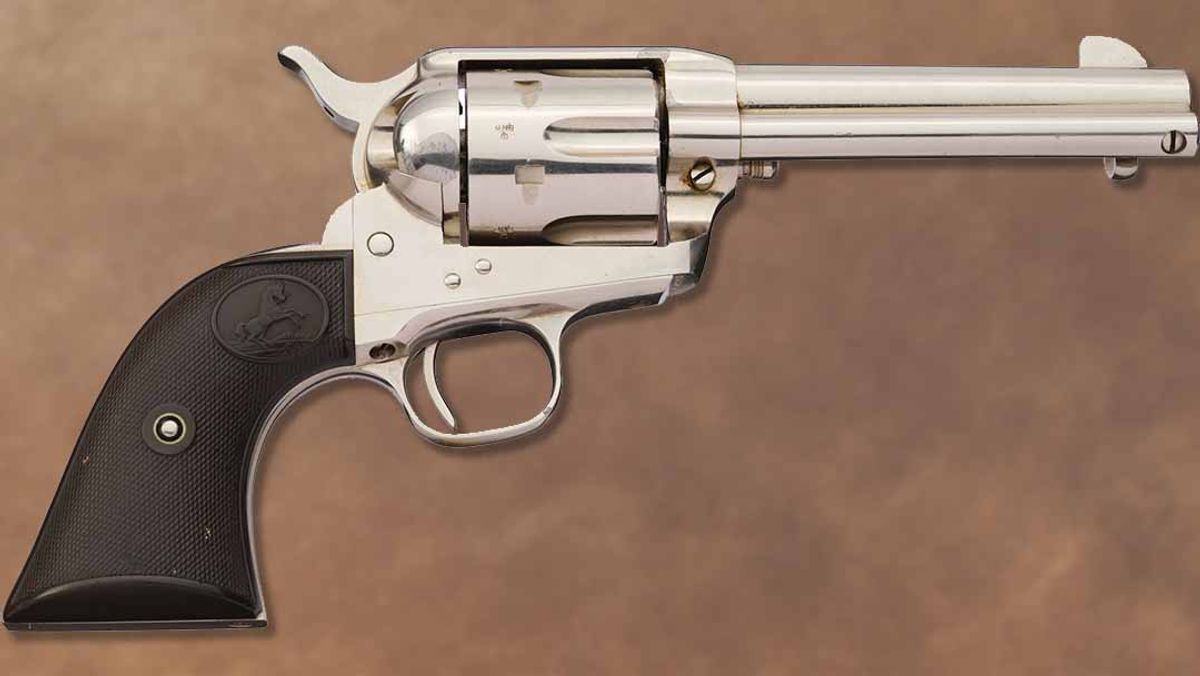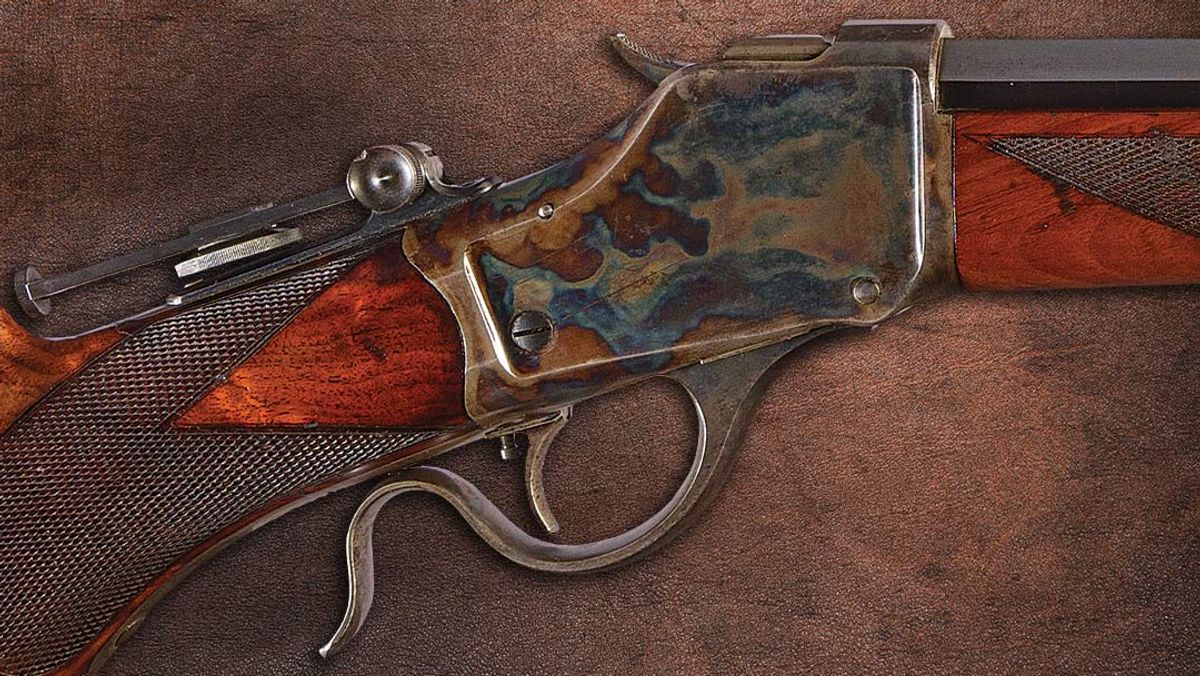Categories
Category: All About Guns

 Following the evacuation at Dunkirk, the British Expeditionary Force was short of small arms in May 1940 and put out the call for handguns. This “Battle of Britain” Colt Single Action Army revolver was shipped to Winchester and then sent to Great Britain where it is identified by serial number. The factory letter states it was sold to the British Purchasing Commission and shipped to Winchester on June 18, 1940.
Following the evacuation at Dunkirk, the British Expeditionary Force was short of small arms in May 1940 and put out the call for handguns. This “Battle of Britain” Colt Single Action Army revolver was shipped to Winchester and then sent to Great Britain where it is identified by serial number. The factory letter states it was sold to the British Purchasing Commission and shipped to Winchester on June 18, 1940.
This revolver from the Pemberton’s gun collection was one of the last manufactured by Colt before production ceased in 1940 as the company ramped up war production.

Categories